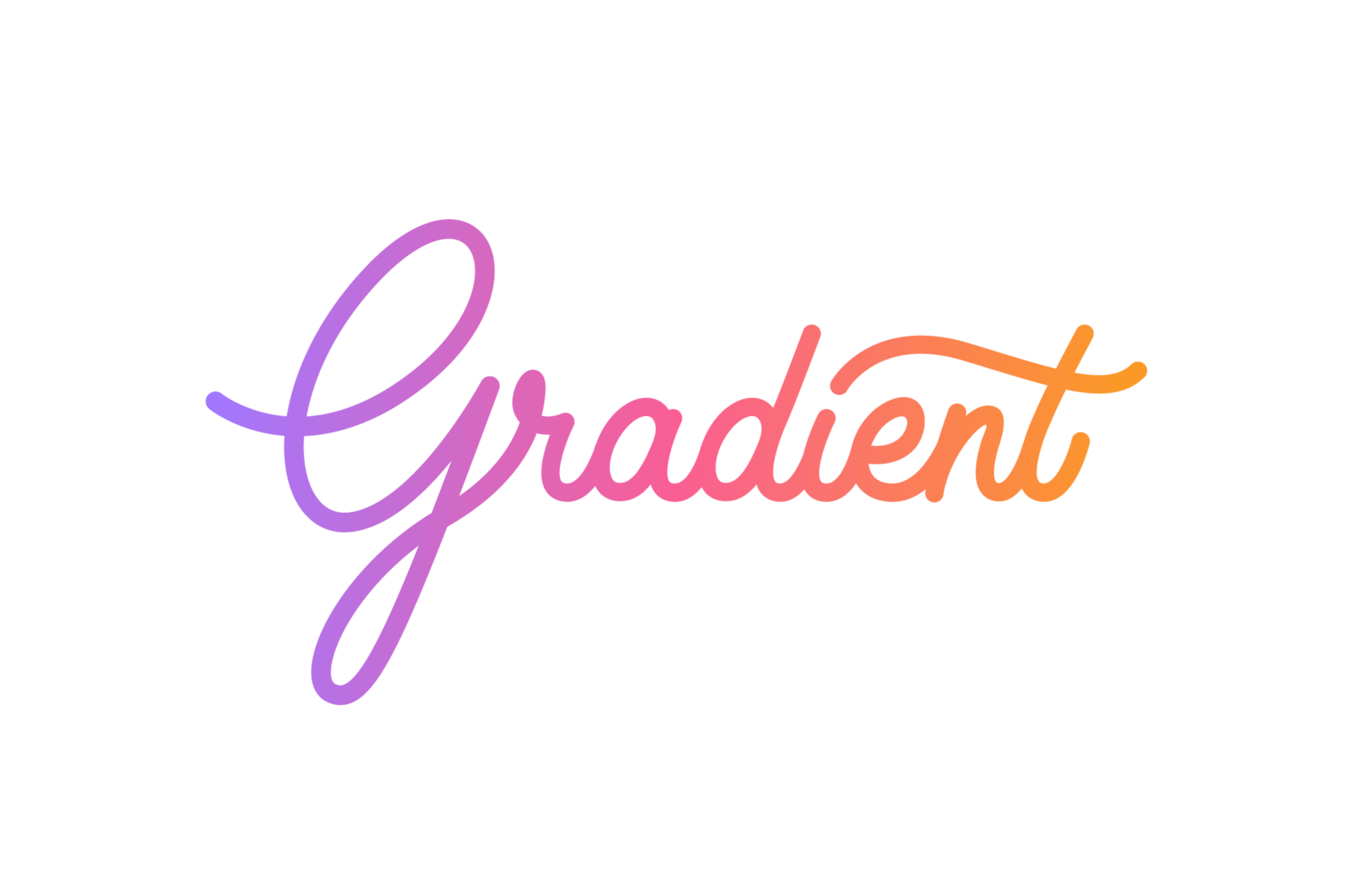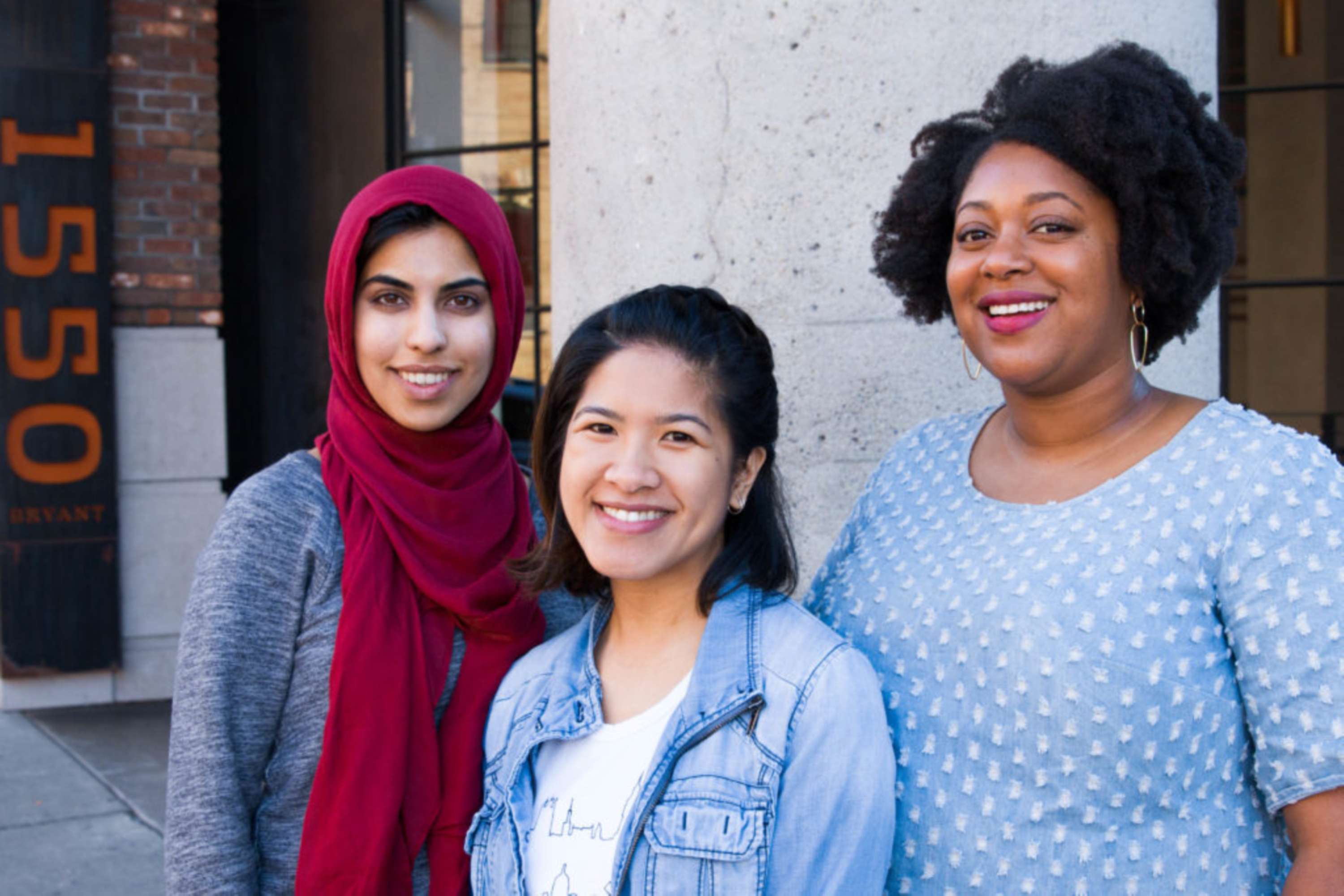(Gradient co-leads Daniah, Chanel, and Joanna)
How can employers focus their attention in order to be inclusive, welcoming workplaces for people of color?
Prashant Pandey, Head of Engineering: One thing that is really important me is having strong role models from broad, diverse, backgrounds. As somebody of Indian origin it would feel very different if there hadn’t been hundreds of thousands of people who looked like me who had made inroads in the tech community before me. By showing a representation of different backgrounds, a company shows its commitment to diversity and increases the chances of it being an inclusive environment.
Chanel Cristobal, University Recruiting Lead: Personally, the most included I’ve felt at work is when we’ve talked about how current events affect different people of color. By not separating work from personal lives, companies can make people feel like their whole selves matter.
Angad Gill, Data Scientist: One, seemingly more superficial way for companies to be inclusive, is showing a diverse—and truthful— representation of their team on their website. A second, really simple way, is to have open discussion forums, like Slack channels, for employees to openly discuss what is important to them.
Joanna Miller, Leadership and Development Lead: Having initiatives be driven from the bottom up and supported by leadership is a strong signal for inclusion. It’s too easy for leadership to drive what will be celebrated and how, without empowering groups to lead those efforts instead.
At Asana, the issue of leadership involvement started as a political discussion. What came out of that discussion was that Asanas felt our leaders could be more involved with our ERGs, which led to us having more executive involvement and then more leaders attending ERG-organized events. I love that we’ve been given a voice and the resources—both financial and of leadership involvement—and the freedom to co-create our experience.
Sonja Gittens-Ottley, Head of Diversity and Inclusion: It’s so powerful for companies to create space for feedback on how employees’ differences affect their experiences. For example, one thing we talk about often at Asana is off-sites. We weigh what kind of off-sites are inclusive versus non-inclusive for different groups, and make decisions based on that feedback. Finally, I think that leadership involvement in inclusion is crucial. By having lead sponsors of ERGs who are involved—not just there to check a box—helps drive meaningful change.
When, in the last year, have you felt the strongest sense of inclusion at work?
Angad: After the march in Charlottesville, we organized a lunch discussion about the events and how everyone was feeling. While the undertones were of sadness and frustration, it’s when I realized I really am welcome here, and everyone can share their experiences without judgement.
Daniah Din, Enterprise Account Executive: I felt most included when my colleagues approached me about doing a talk on being Muslim in America. It’s something I would never have felt comfortable talking about at my previous companies; it’s something very personal. To have support from the company—and to see my whole team attend—made me feel like I belong here.
Prashant Pandey: Earlier this year, our colleague gave a talk on his and his wife’s experience with fertility. We had discussed it in great detail when he was going through it, but when he decided to share it with the company, I really felt like we can bring all of our experiences to the table and that they are all valuable for people to learn from.
How can ERGs and companies recognize the many voices that exist within groups of people of color? How can they acknowledge and balance the different voices represented?
Joanna Miller: In general, having activities and opportunities that are driven by experience versus solutions is a great way to promote people being heard. For example, Gradient has loved exploring the physical community around our office together. Last year we had a holiday dinner at a nearby Ethiopian restaurant. While nobody in the group was Ethiopian, the dinner was Ethiopian, it was a way for us to have a shared cultural experience and encourage everyone to share their unique interpretations.
Chanel Cristobal: One way we’ve found to recognize the many voices is to highlight them in small ways. For example, our Culinary Team often celebrates different cultures through food. One morning, there was a Filipino breakfast pastry served. I have never seen anything so Filipino before, and I thought it was so cool that our Culinary Team was showing that my voice mattered.
What are some ways to support minorities without relying on them to carry all the weight of taking initiative and driving change? How can allies be supportive to people of color?
Sonja Gittens-Ottley: For me, the first thing a company can do is make sure that everybody knows they can have a seat at the table. That includes encouraging people to join ERGs, to become cultural liaisons, and also reaching out to communities outside of the office. We can’t expect people to know that they should do one thing or another, but must actively have groups reach out to the communities they feel they can help to represent.
Too often, when it comes to underrepresented groups, the most important step is to let those groups know that there are resources available to them, and there are others here to help.
Prashant Pandey: We’re still working on this at Asana, but one way to support minorities is to recognize the work they do for ERGs. This could look like a manager or peer providing feedback on someone’s contributions to an ERG, or including work with the ERG in the person’s roles and responsibilities. Recognizing the work that goes into being part of an ERG signals that they are appreciated and supported.
Daniah Din: One way I’ve felt supported as a minority is that Asana values every individual who works here and wants to hear their stories. It’s not about you speaking for your group or minority; it’s that Asana values your story and what you bring to the table.
Sonja Gittens-Ottley: Our group is so diverse and we represent all these different communities. At different points in time, we’ve all been able to be an ally for the other groups when things have happened. Because it’s such a diverse group in and of itself, we’ve attracted not just people of color, but also allies who want to learn.
A way I’ve felt personally supported was after we held a safe space to discuss one of the several shootings that happened. I broke down emotionally, and someone who isn’t part of this ERG was there for me. They comforted me, listened to me, and connected with me. Being supportive as an ally is about being there—not necessarily understanding, but helping someone process their emotions.
Joanna Miller: I have a lot to say on this topic! One way I’ve seen Asana support minorities without putting the weight on them is by funding conferences and enrichment opportunities. These allow people from underrepresented groups within our company to connect with other people in the industry and broader professional community.
Another thing we’ve done is start a tough questions Asana project. It’s a place where people, especially allies, are encouraged to post questions that they feel uncomfortable asking to someone specifically. Group members, sometimes multiple, will then answer the questions.
Finally, one way I tried to spread the weight of this work is by diversifying our vendors. I’ve become committed to hiring companies and working with partners who reflect the diversity and the values that we support.
Chanel Cristobal: I’ve noticed that the allies I work with keep me accountable to the diversity that they hope to see, too. For example, if we commit to attending a diversity conference one year, my teammates will always ask what our plan is the following year. They make these goals feel important not just to me personally, but my team as a whole, too.
How have you built a sense of trust and community within Gradient? Within Asana more broadly?
Chanel Cristobal: The most effective way I’ve found to build trust and community has been planning activities outside of the office. Even something as simple as going to watch a movie together makes me feel like I’m getting to know people more than I might just at work.
Joanna Miller: I agree, shared experiences, like our Ethiopian dinner or going to see a show about race, socioeconomic diversity, and interracial dating, let us share experiences and connect on a deeper level.
What do you feel have been the key ingredients for Gradient’s success?
Chanel Cristobal: The openness of not only Gradient members, but also the rest of Asana, has made us really successful.
Sonja Gittens-Ottley: Leadership of the group has been crucial. The leaders of this group are so passionate and prioritize this work. It’s also been important for our ERG leaders—across Gradient, Team Rainbow, and Asana Women 1—to get to know each other, share best practices, and learn together. Prashant Pandey: The existing ERG framework and having other examples of successful ERGs around us has been a large part of our success.
Joanna Miller: A large part of our success comes from the attendance of our core members. In addition to attending, I’ve been delighted by the number of core members who bring an ally to our meetings. The combination of enthusiasm from within and the curiosity from outside the group have been a recipe for success.
In what ways does Gradient still have work to do?
Sonja Gittens-Ottley: I’d like to imagine a world in which Gradient doesn’t exist because the smaller groups that we represent are large enough to have their own ERGs.
Joanna Miller: I would love to see professional development that acknowledges the reality of being a mid-to-senior professional who is a person of color. This could mean more access to role models, networking opportunities, or speakers for events.
Learn more
Gradient has only just started its work, but it’s exciting to see the community they’ve built and successes they’ve celebrated thus far. We hope that some of their key takeaways can be of use to you in your employee resource groups and companies. If you’d like to learn more about what it’s like to work at Asana, visit our diversity and inclusion and jobs pages. 


